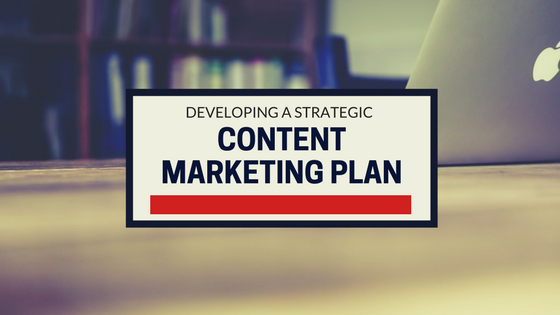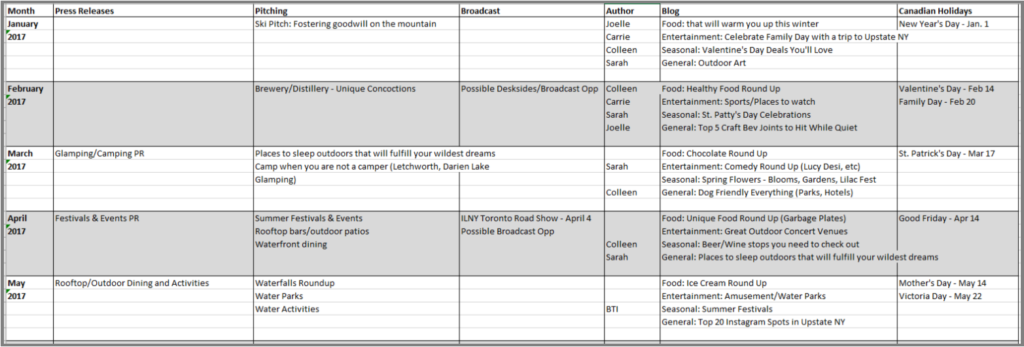Developing a Strategic Content Marketing Plan
We recently defined content marketing and its importance in your overall marketing strategy. But how can you take this information and dive into creating a content strategy?

Developing a content strategy.
It’s important to create content. It’s more important to create good, quality content – and make it available to the right people at the right time, in the right places. Which means you need to be strategic about your content. Sure, you can throw some words together in a blog but if it isn’t addressing the reader’s needs – or worse, the reader can’t find it where they’re looking – then it’s not doing anyone any good.
By being strategic about your content marketing, you are able to get the biggest bang for your buck.
- Think about how you can develop content one time and repurpose it for different formats or channels. After you publish a killer blog post that shows off your thought leadership, post it in an industry-specific forum to drive traffic to your website.
- Consider how you can produce quality content that helps to generate business leads and grow your revenue, such as hosting a travel and tourism podcast and emailing it to your subscribers every week.
Here are some tips on developing a strategic content marketing plan.
1. Identify your organization’s overall message and goals
What is the message that you want these pieces to convey? What is the end goal? Ultimately, what do you want the reader to do with the information? These are things that should be in the back of your mind as you start planning your content strategy and brainstorming your content pieces.
2. Take inventory of your content and your channels
First, do a content audit to see what you already have in your arsenal. (Let’s not reinvent the wheel here.) Ask yourself if you can reformat any of it for a different channel. A great example would be pulling a chart from a white paper and sharing it on social media.
Then, think about the channels you run – such as your website or social media sites, or have access to, like forums or LinkedIn groups. Consider how content is consumed on these platforms and what forms your content can take shape. Examples include: videos, e-books, white papers, newsletters, infographics, podcasts, listicles, blog posts, photo galleries, webinars – the list goes on and on!
3. Develop content ideas.
Take some time and brainstorm ideas for new content. Identify the overall themes of each content piece. To keep it timely, consider the different seasons, upcoming holidays, events or conferences that your audience will be attending, even problems or questions your audience will be looking to answer. For example, think about sharing your can’t-miss summer festivals at the end of spring, when visitors are starting to make their summer plans.
Organize your thoughts in a content calendar (also known as editorial calendar). Find a format that works best for you – we like to use a spreadsheet with separate columns for each form of content: press release topics, pitching angles, blog topics, etc. Another way could be making the columns your different platforms – website, Facebook, LinkedIn group – and then filling in the cells with the topic and format of each content piece. Based on how frequently you share content, the rows of your spreadsheet would identify the days, weeks, or months.
Planning out a few months (or even a year) at a time will make the process fluid. You will be able to easily write and publish interesting content, without pausing each week to think, “What should I write about this time?” You’ll also avoid overlapping topics too closely together, and becoming repetitive.
4. Write your content.
Now it’s time to bang out some awesome, informative content! The purpose of the content is to position yourself or your organization as a thought leader (which will attract people to come back frequently) so share your knowledge.
Keep in mind the voice and tone of each piece, as this differs across platforms. For example, blog posts can show off more of the brand’s quirky personality, while white papers are typically more formal- but that doesn’t mean boring! Infographics are usually heavy on stats and brief on copy, but case studies are full of rich details.
Make sure your content is addressing the goals you outlined earlier for the end user. If you want readers to sign up for your newsletter, make sure you’re directing them to your sign-up form.
5. Publish your content.
After all of that planning, it’s now time to share your content. You may want to do it all manually, or use a service to schedule things out. Protip: Just because you’re in the office 9-5, doesn’t mean that’s when users are consuming information. Schedule your content to drop when most people are on the platform.
Most importantly, make sure your content is easily shareable. Add social share buttons so people can quickly send that great post or podcast to their friends and colleagues.
Author
Related Posts
Collaboration Drives Sustainable Tourism
Sustainable tourism has growing importance in the world of travel and tourism. As destinations grow in popularity, they need to collaborate closely with residents, local…
Marketing for Group Travel: Building Solid Relationships with Tour Operators
Group travel is a significant segment of the tourism market, and if you want to see those buses pulling up to the curb and filling…

